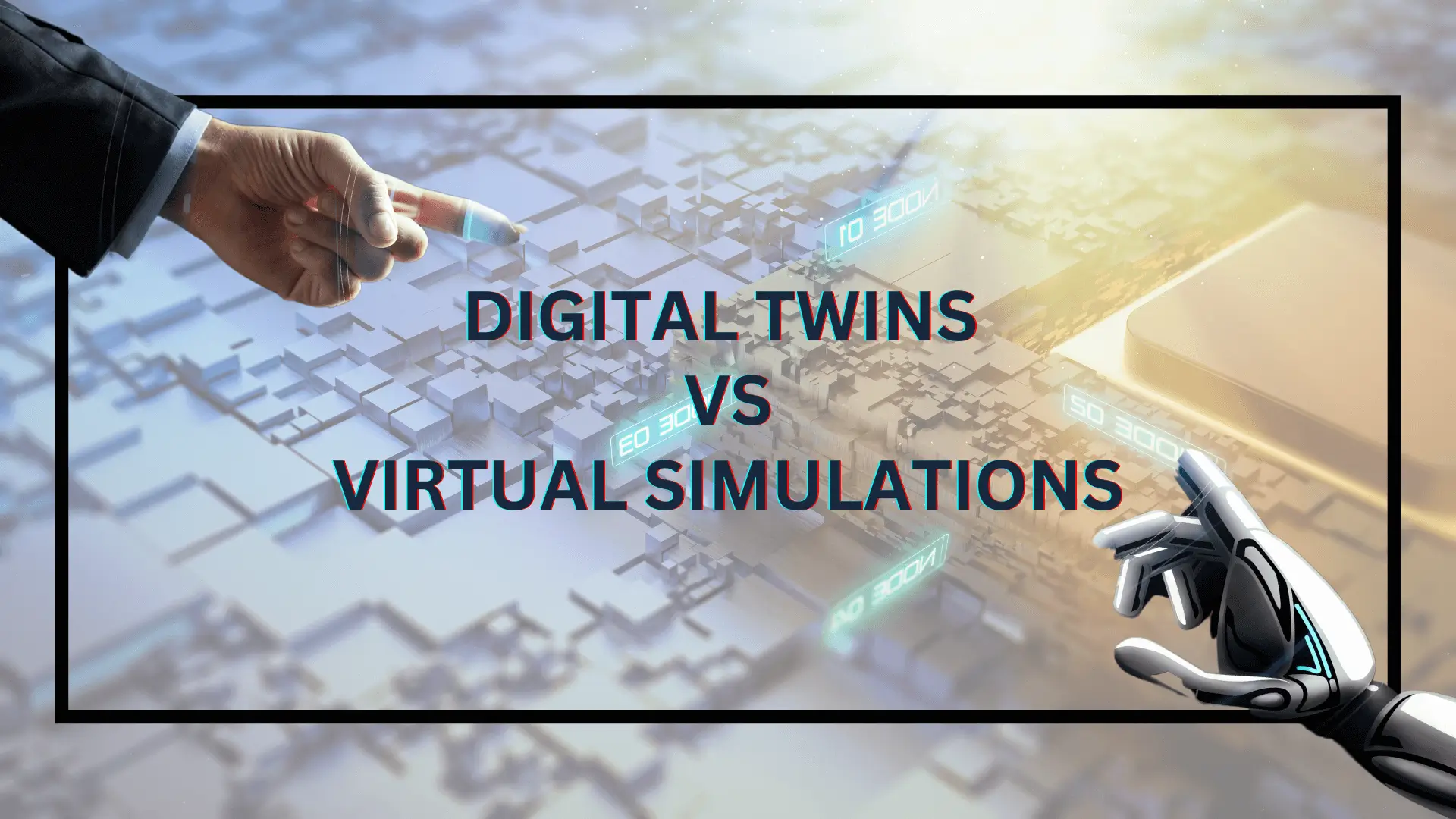
Technology can sometimes be overwhelming, but it doesn’t have to be! Let’s explore two fascinating notions: Digital Twins vs. Virtual Simulations. It may seem like they’re identical, but they’re very different. When you’re done reading this article, you’ll know precisely what they do and how they contribute to making our lives more efficient.
What Are Digital Twins?
A Digital Twin is like having a virtual copy of something that exists in the real world—like a machine, a building, or even a whole city! Imagine if your bicycle had a twin in the computer that shows precisely how it’s working right now, including every twist and turn of the wheels. This “twin” helps people see how well things work in real time because it gets constant updates from sensors on the real object. This way, if something’s wrong, it shows up on the twin before it becomes a bigger problem.
How Does Digital Twins Work?
- Real-time data: Sensors on the real object collect information, like temperature, speed, or pressure, and send that data to the digital twin.
- Continuous updates: The twin is constantly getting updated, reflecting what’s happening to the real object.
- Helps predict problems: Digital twins can help predict when something will go wrong. For instance, a car’s engine can use a twin to inform you that it needs maintenance before breaking. For more on this, check out our detailed guide on Digital Twin Software and Tools.
Examples of Digital Twins:
- Healthcare: Doctors use digital twins of patients’ organs to plan surgeries and predict how different treatments will work. This technology is explained further in our article on The Evolution of Digital Twins.
- Manufacturing: Factories use digital twins to monitor machines and prevent breakdowns, saving time and money. Explore more real-world applications in our blog on Digital Twin Use Cases.
What Are Virtual Simulations?
On the other hand, a Virtual Simulation is like playing a video game where you’re testing how something might work in a pretend world. You create a model of an object or a process and then run tests to see how it behaves under different situations. Simulations don’t use real-time data like digital twins; instead, they work with the information you provide upfront.
How Does Virtual Simulations Work?
- Hypothetical testing: You set up different scenarios to see what could happen. For example, you could simulate a car crash to see how safe the car is.
- No real-time updates: Simulations are done in a controlled environment with set conditions.
- Testing without risks: They are helpful in testing dangerous or expensive scenarios without doing them in real life.
Examples of Virtual Simulations:
- Gaming companies such as EA use game simulations to evaluate game mechanics before making a game available for launch.
- Training: Pilots utilize flight simulators to learn how to fly in various weather conditions before stepping into a real plane.
Key Differences Between Digital Twins and Virtual Simulations
Now that we know what they are, let’s break down the key differences.
- Real-Time Data:
- Digital Twins use real-time data from the actual object, which helps them give a current and accurate picture of how that object is performing. Learn how this impacts different industries in our post on How to Use Digital Twins in Your Business.
- Simulations work with pre-set data, meaning they don’t reflect real-world changes as they happen.
- Purpose:
- Digital Twins can be used to monitor real-time processes or objects to help industries and businesses avoid problems before they happen.
- Simulations are used to anticipate what could happen in certain scenarios, such as an accident in a car or a weather occasion.
- Complexity:
- Digital Twins manage complex, massive systems (like factories or whole cities) by connecting data from various sources.
- Simulations are more straightforward and typically concentrate on a single instance or event, such as testing the behavior of a car in freezing weather.
When Should You Use Digital Twins vs. Virtual Simulations?
- Use Digital Twins When:
- You need to monitor something continuously, like a machine in a factory or even a whole city’s energy use.
- You want to predict when things might go wrong and fix them before they do.
- Use Virtual Simulations When:
- You’re trying out “what-if” scenarios, like the way a plane behaves during a storm or how a brand-new product’s design will perform in the face of stress.
Real-World Examples of Digital Twins and Virtual Simulations
To make this even clearer, let’s look at some real-life examples:
Rolls-Royce Jet Engines:
Rolls-Royce uses digital twins for its jet engines. Sensors in the engines transmit data to the twin, permitting engineers to observe the performance of the plane when it is flying and to predict maintenance requirements.
Flight Simulations:
Pilots often use flight simulators to practice flying in different weather conditions. These simulations are based on what it is like in real life. However, they aren’t up-to-date with real-time information. Instead, they employ scenarios designed by engineers.
Conclusion
Virtual simulations and digital twins appear similar, but they have different functions. Digital twins are primarily about monitoring in real-time and forecasting the future, whereas virtual simulations allow you to play in a secure, controlled environment without the danger of real-world consequences. Both technologies have changed the way industries and businesses work, making them safer, more efficient, and more effective.
